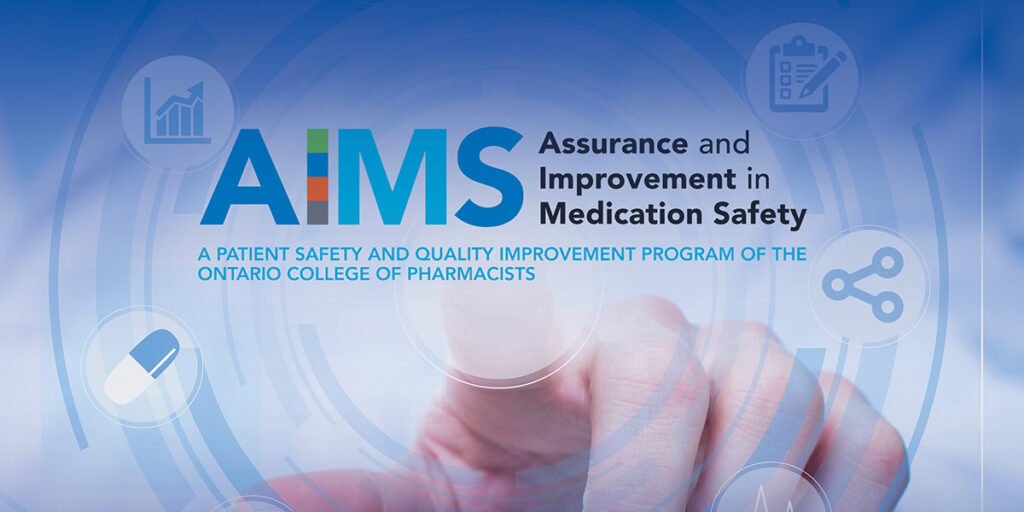By Ian Stewart R.Ph, B.Sc.Phm.
Pharmacists and pharmacy technicians must be aware of the potential and impact of errors of omission, where the appropriate action is not taken. For example, a much needed drug is not provided to a patient or there is a delay in providing the drug.
This often occurs when a non-prescription drug is prescribed as the following case highlights.
CASE:
Rx:
Metronidazole
500mg four times daily for 14 days
Bismuth subsalicylate
300mg four times daily for 14 days
Tetracycline
500mg four times daily for 14 days
Omeprazole
20mg twice daily for 14 days
A sixty-four year old patient with multiple comorbidities had been taking omeprazole 20mg once daily for dyspepsia.
Following a consultation with her family doctor, the above prescription was faxed into her community pharmacy for processing.
The metronidazole and tetracycline were prepared and dispensed as prescribed. The bismuth subsalicylate was not covered by the patient’s insurance likely because it is a non-prescription drug. The pharmacist made the decision to not process the prescription for bismuth subsalicylate as it can be bought over the counter without the need of a prescription.
The patient’s insurance also declined to pay for the omeprazole as the patient received thirty tablets ten days earlier. The omeprazole was therefore “logged” into the patient’s medication records.
The patient later called and asked the pharmacy to deliver her medications. As a result, only the metronidazole and tetracycline were delivered to the patient.
The pharmacist had intended to call the patient for counselling after the medications were delivered, but did not make the call before the end of his shift. As a result, the patient did not initiate the bismuth subsalicylate and continued to take omeprazole once daily versus the twice daily as prescribed.
Three days later, the patient visited the pharmacy to discuss another issue. During this visit and subsequent discussion with the pharmacist, the error of omission was discovered.
POSSIBLE CONTRIBUTING FACTORS:
- Initiation of a medication regimen that was unfamiliar to the patient.
- The bismuth subsalicylate was not processed as a prescription and was not placed in the pickup drawer with the other medications.
- The pharmacist had intended to speak directly with the patient regarding the bismuth subsalicylate and omeprazole dose increase at pick up. However, the patient requested the medications be delivered.
- Lack of patient counselling and a system to ensure counselling takes place on all delivered medications.
RECOMMENDATIONS:
- Ensure that a thorough patient assessment is completed, including determining whether the medication regimen as prescribed is appropriate for the patient and their condition.
- Policies and training should direct staff that all of the medications in the prescription should be kept together prior to packaging, counselling, and pickup/delivery.
- Develop a system to ensure all patients are made aware of prescriptions being called in or faxed in by their physician. In many instances, patients are unaware that the prescription had been processed and ready for pick up.
- Consider processing prescriptions for non-prescription drugs as prescribed. This will ensure that the patient receives the correct drug and directions for use. Some pharmacy management systems have functionality that allows for inclusion of non-prescription products in the patient record and drug utilization review (DUR).
- For medications not being processed as a prescription, retrieve the medication from the shelf and place in the pick-up drawer with clear directions for use for the patient to follow.
- Develop a system to ensure all medications being delivered are counseled with documentation.
- Ensure patients are made aware of any change in dosing even if no medication is being dispensed due to early refill. Appropriate documentation must take place.
Please continue to send reports of medication errors in confidence to Ian Stewart at: ian.stewart2@rogers.com . Sharing your experience can prevent similar occurrences at other practice sites.
Please ensure that all identifying information (e.g. patient name, pharmacy name, healthcare provider name, etc.) are removed before submitting.

APPLYING THE AIMS PROGRAM TO THE FOCUS ON ERROR PREVENTION INCIDENT
Under the Assurance and Improvement in Medication Safety (AIMS) Program, pharmacy professionals must anonymously record incidents and near misses to the AIMS Pharmapod platform, document appropriate details in a timely manner, analyze the incident to identify causal factors, determine ways to minimize the likelihood of recurrence, and share the incident and learnings with all pharmacy staff. All of these elements are equally important in helping to reduce the risk to patients in the future.
The incident detailed above provides an opportunity to examine what pharmacy professionals must do as part of the AIMS Program when they identify a medication incident or near miss.
ANALYZE
The pharmacist should make a list of contributing factors they could identify for why the incident happened (see the list of possible contributing factors above). A review of existing processes can be done to identify gaps and inform any changes to processes. The pharmacist can also bring forward suggestions to prevent recurrence. The Designated Manager of the pharmacy and the pharmacy team should also be a part of this process.
DOCUMENT
Details of the incident, including communication with the patient following discovery of the incident, must be documented in a timely manner to support accuracy.
There should also be documentation of any continuous quality improvement plans, such as specific actions that are being taken in response to the incident (i.e. developing a process to ensure counselling occurs for all deliveries, creating a checklist on how to manage over the counter medications that have been prescribed).
RECORD
The incident must be anonymously recorded in the AIMS platform. Recording the incident not only helps the pharmacy, but it also contributes to learnings for pharmacy professionals across the province as the aggregate data can be used to identify trends and learnings that could prevent incidents like this in the future.
SHARE LEARNINGS
In the next staff meeting, or in small groups at the start of the shift, the importance of ensuring patient counselling for deliveries could be discussed. The team could also review specific suggestions (see the Recommendations above) and determine how they could be implemented. For example, a staff member might have an idea of how best to ensure that prescribed over the counter products are appropriately documented and placed with the other medications for pick up.
FOLLOW UP
Once the above steps are completed and some time has passed to allow for implementation of the action items identified as part of the Analyze and Share Learnings activities, the Designated Manager should review the action plan, which had been entered into the AIMS platform when the incident was recorded, to evaluate whether the changes have been maintained, and whether they were effective.
This action plan and outcomes should be reviewed again with the pharmacy team at the next opportunity.













